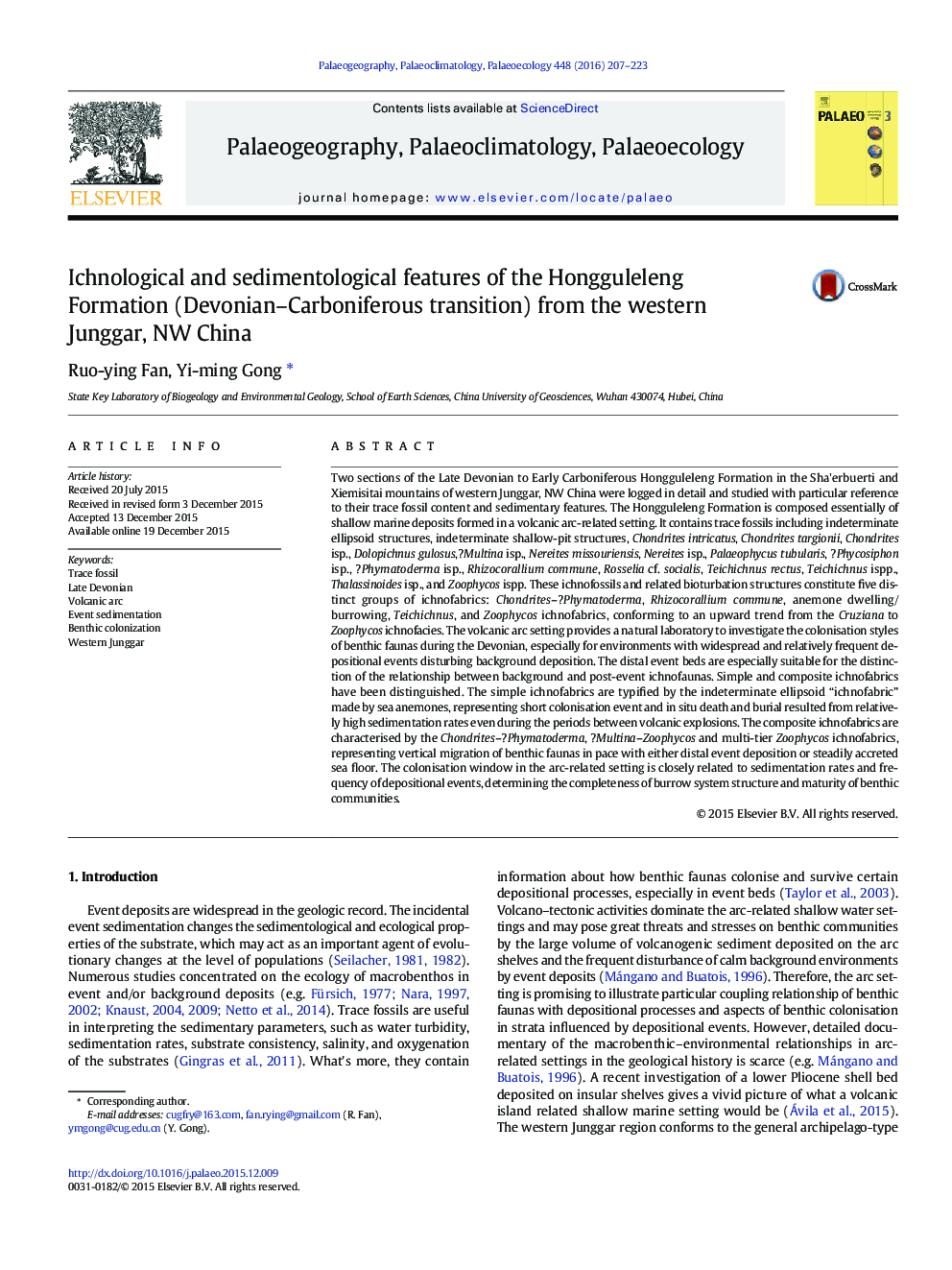| کد مقاله | کد نشریه | سال انتشار | مقاله انگلیسی | نسخه تمام متن |
|---|---|---|---|---|
| 4465850 | 1622143 | 2016 | 17 صفحه PDF | دانلود رایگان |

• Ichnofabrics are logged and interpreted in two D–C transitional sections in NW China.
• Sedimentary facies reflect strong influences from oscillatory flows and volcanism.
• A special fabric made by sea anemones is recognized in the rhythmic tuffites.
• Sedimentation rates and frequency of depositional events impact on the ichnofaunas.
Two sections of the Late Devonian to Early Carboniferous Hongguleleng Formation in the Sha'erbuerti and Xiemisitai mountains of western Junggar, NW China were logged in detail and studied with particular reference to their trace fossil content and sedimentary features. The Hongguleleng Formation is composed essentially of shallow marine deposits formed in a volcanic arc-related setting. It contains trace fossils including indeterminate ellipsoid structures, indeterminate shallow-pit structures, Chondrites intricatus, Chondrites targionii, Chondrites isp., Dolopichnus gulosus,?Multina isp., Nereites missouriensis, Nereites isp., Palaeophycus tubularis, ?Phycosiphon isp., ?Phymatoderma isp., Rhizocorallium commune, Rosselia cf. socialis, Teichichnus rectus, Teichichnus ispp., Thalassinoides isp., and Zoophycos ispp. These ichnofossils and related bioturbation structures constitute five distinct groups of ichnofabrics: Chondrites–?Phymatoderma, Rhizocorallium commune, anemone dwelling/burrowing, Teichichnus, and Zoophycos ichnofabrics, conforming to an upward trend from the Cruziana to Zoophycos ichnofacies. The volcanic arc setting provides a natural laboratory to investigate the colonisation styles of benthic faunas during the Devonian, especially for environments with widespread and relatively frequent depositional events disturbing background deposition. The distal event beds are especially suitable for the distinction of the relationship between background and post-event ichnofaunas. Simple and composite ichnofabrics have been distinguished. The simple ichnofabrics are typified by the indeterminate ellipsoid “ichnofabric” made by sea anemones, representing short colonisation event and in situ death and burial resulted from relatively high sedimentation rates even during the periods between volcanic explosions. The composite ichnofabrics are characterised by the Chondrites–?Phymatoderma, ?Multina–Zoophycos and multi-tier Zoophycos ichnofabrics, representing vertical migration of benthic faunas in pace with either distal event deposition or steadily accreted sea floor. The colonisation window in the arc-related setting is closely related to sedimentation rates and frequency of depositional events, determining the completeness of burrow system structure and maturity of benthic communities.
Journal: Palaeogeography, Palaeoclimatology, Palaeoecology - Volume 448, 15 April 2016, Pages 207–223